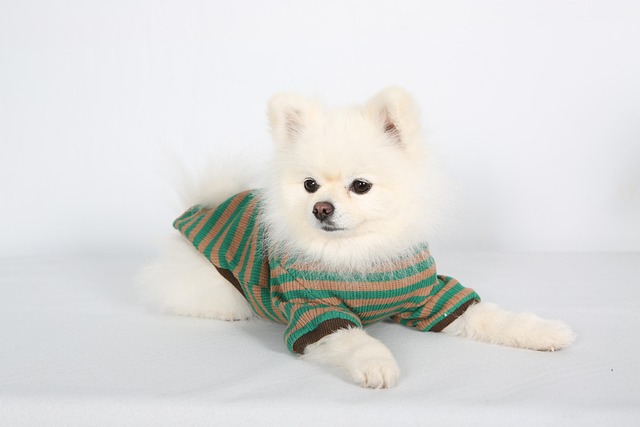
How can I tell if my dog's heatstroke is serious
Let’s be real: It’s a sticky August morning in Los Angeles, and you took your 2-year-old Golden Retriever, Max, for a walk a little later than usual
Pomeranians are known for their fluffy coats and energetic personalities, but some owners find their little companions struggling to maintain a healthy weight. If your Pom looks too thin—ribs showing easily under that fur, or a noticeable waistline that’s more severe than the breed’s typical compact build—it might be time to take action. Before making any changes, though, schedule a vet visit. Conditions like thyroid issues or dental pain can suppress appetite, and addressing those first is key. In many EU countries and U.S. states, regular veterinary check-ups are part of responsible pet ownership laws, so this step keeps you compliant too.
Start by evaluating their current diet. Many commercial kibbles labeled for small breeds are formulated to prevent obesity, which might not work for a underweight Pomeranian. Look for high-quality options with at least 25% protein and 15% fat, focusing on whole ingredients like chicken or salmon. Adding a tablespoon of plain, unsalted pumpkin or Greek yogurt (no xylitol) can boost calories without upsetting their stomach—just avoid sudden changes, as Poms have sensitive digestive systems.
 Feeding frequency matters more than you might think. Instead of two large meals, try three or four smaller portions throughout the day. This mimics how they’d eat in a natural setting and can encourage pickier eaters. Keep meal times consistent, but don’t leave food out all day—free feeding can lead to irregular eating habits. In places like the UK, leaving pet food unattended outdoors might attract wildlife, which could violate local ordinances, so stick to indoor feeding routines.
Feeding frequency matters more than you might think. Instead of two large meals, try three or four smaller portions throughout the day. This mimics how they’d eat in a natural setting and can encourage pickier eaters. Keep meal times consistent, but don’t leave food out all day—free feeding can lead to irregular eating habits. In places like the UK, leaving pet food unattended outdoors might attract wildlife, which could violate local ordinances, so stick to indoor feeding routines.
Healthy treats are another way to add calories without sacrificing nutrition. Freeze-dried liver bits or small pieces of cooked chicken (no bones, no seasoning) make great rewards during training sessions. Avoid processed snacks with fillers, as they offer little nutritional value. Remember, treats should make up no more than 10% of their daily calories to keep their diet balanced.
Exercise is important, but don’t overdo it. Pomeranians need daily walks and playtime to stay mentally stimulated, but excessive activity burns calories they’re trying to gain. Aim for 20-30 minutes of moderate exercise—short walks, fetch in the yard—adjusting based on their energy levels. If you live in an apartment, interactive toys like puzzle feeders can keep them active without overexertion.
Monitor their progress closely. Weigh your Pom weekly at the same time, using a small scale. A healthy gain is about 0.5-1 ounce per week—anything faster could mean adding fat instead of muscle. If you don’t see improvement after a month, check back with your vet. They might recommend prescription diets or further tests to rule out underlying issues.
Helping your Pomeranian gain weight takes patience, but the payoff is a happier, healthier companion. By combining a nutrient-rich diet, consistent feeding habits, and mindful exercise, you’ll support their growth while keeping up with the responsible pet ownership standards that matter in your area.

Let’s be real: It’s a sticky August morning in Los Angeles, and you took your 2-year-old Golden Retriever, Max, for a walk a little later than usual

You're enjoying a summer afternoon at the park when you notice your dog has stopped panting and appears disoriented - their gums are bright red

Let’s paint the picture: You’re in your Denver apartment, watching your 4-year-old Boston Terrier, Ruby, plop down mid-play session with her favorite toy

Many dog owners notice their pets nails seem shorter after regular walks,but how much does this daily activity actually help?The answer depends on where you walk—concrete sidewalks or asphalt streets gently file nails as a dog's paws hit the ground

Most dog owners notice their pup scooting across the carpet at some point, but few connect it to impacted anal glands. These small sacs near a dog’s rectum secrete a scent for marking territory

Most vets agree that regular dog teeth cleaning is key to avoiding painful dental issues later. For healthy adult dogs, a professional cleaning at the vet’s office every 12 to 18 months usually works well.